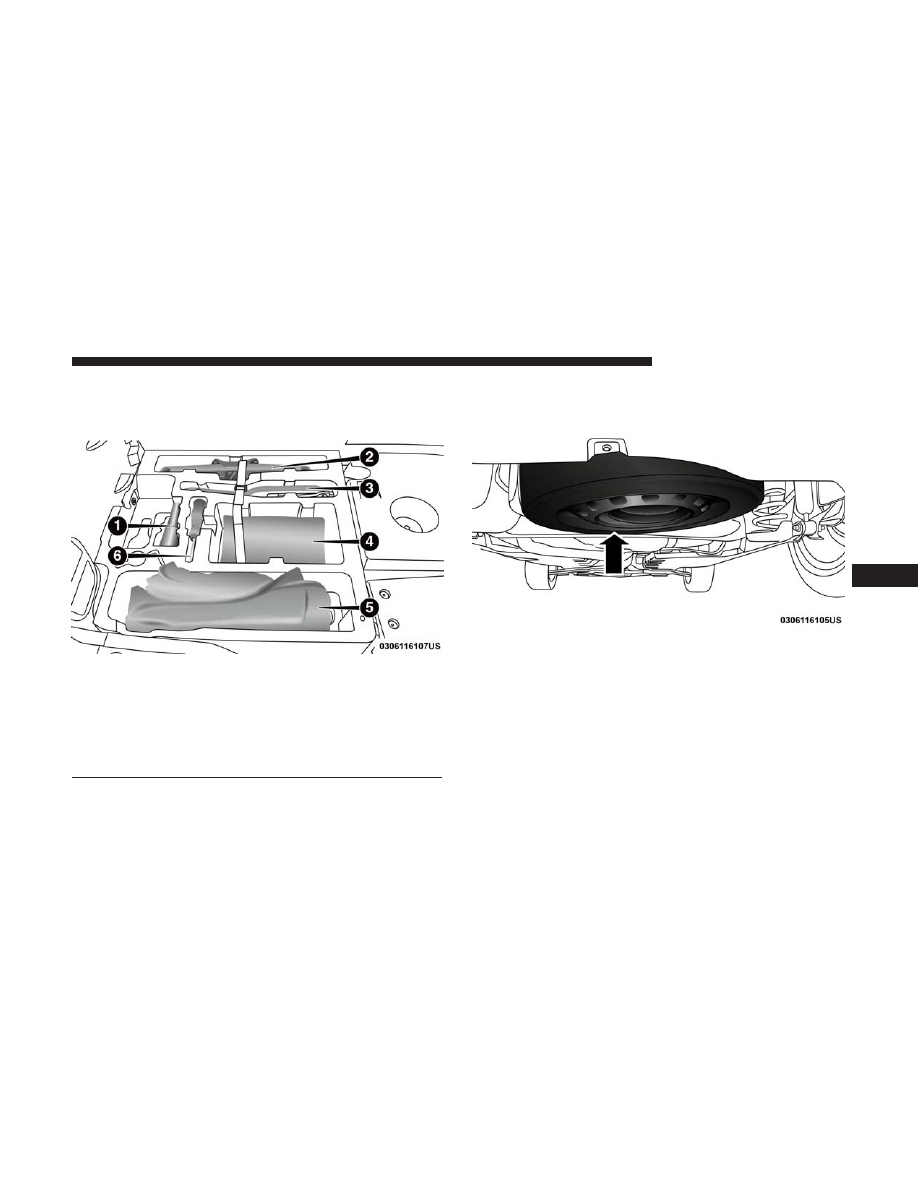Fiat 500L (2019 year). Instruction - part 14

Jack Location
The spare tire jack is located in the rear cargo area
underneath the cargo floor.
Spare Tire Removal/Stowage
The spare tire is stowed in underneath the rear cargo area
on the outside of the vehicle.
1. Remove the cargo floor to access the winch.
2. Remove the jack handle and use the wrench end to
lower the spare tire.
Jack Location
1 — Emergency Fuel Fill Funnel
2 — Jack
3 — Jack Handle
4 — Emergency Allen Key
5 — Emergency Spare Tire Bag
6 — Emergency Screwdriver
Spare Tire Location
7
IN CASE OF EMERGENCY
217